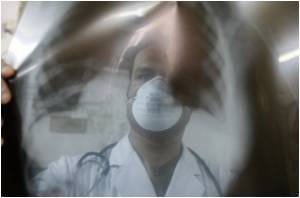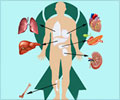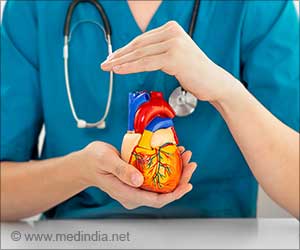Toronto XVIV0 Lung Perfusion System can safely and effectively improve the function of high-risk donor lungs so that they can be successfully transplanted into patients.

Their study, "Nornothermic Ex vivo Lung Perfusion in Clinical Lung Transplantation" is published in the April 14, 2011 edition of the New England Journal of Medicine. Drs. Keshavjee and Marcelo Cypel are presenting the long-term outcomes of this study at the International Society for Heart and Lung Transplant in San Diego on April 14 at 9:00am (Pacific Time).
"This heralds a new era in transplantation where we can predict how well the organ functions before using it, we can help the organ heal itself, and ultimately, we can use the Toronto XVIVO as a platform to engineer 'super organs' for transplantation," says Dr. Keshavjee, who is also Director, Latner Thoracic Research Laboratories and Professor of Thoracic Surgery at the University of Toronto.
Typically, only about 15% of donor lungs world-wide are acceptable for transplantation since lungs are susceptible to injuries during the brain-death process or from intensive care related lung complications. Moreover, organ retrieval often occurs before the lungs can recover from their injuries.
During the study period from September 2008 to January 2010, 136 lung transplants were performed. Twenty (20) high-risk donor lungs with impaired function and chest x-ray abnormalities, which were treated and tested for four hours with the Toronto XVIVO Lung Perfusion System were transplanted, and 116 were the controls or conventional donor lungs with acceptable functioning. Recipients were chosen sequentially, via usual criteria such as blood type and size of the organ, and consented to the study protocol.
The major endpoint was primary graft dysfunction, (acute lung injury after transplantation), at 72 hours after transplant, and secondary endpoints were 30-day mortality, ICU and hospital stay and length of mechanical ventilation. The primary end point was chosen because patients who have primary graft dysfunction 72 hours after transplant have more complications, higher organ rejection and mortality rates.
Advertisement
The Toronto XVIVO System was associated with gradual improvement in function in most lungs and, importantly, it was also helpful in determining a small subset of donor lungs (three) that were not suitable for transplantation.
Advertisement
After the development of this system in Toronto, lung transplants centers in the United Kingdom, Austria, and Spain have started to successfully use this system, demonstrating that the procedure is reproducible. Drs. Keshavjee and Cypel estimate that the Toronto XVIVO System could potentially quadruple the number of transplants a year.
Unlike current cooling preservation fluids which inhibit repair processes of the donor lungs, the Toronto XVIVO Lung Perfusion System preserves lungs at normal body temperature, with the lungs kept outside the body in a protective dome. The system continuously pumps a bloodless solution of oxygen, proteins and nutrients into injured donor lungs, mimicking normal physiological conditions. The lungs are treated with anti-inflammatory medications and antibiotics. This makes it possible for the injured cells to begin repairing themselves, and sets the stage for more sophisticated repair techniques to be applied to donor lungs.
"This work opens the door for a variety of molecular or gene-based therapies that could potentially be applied to repair various injuries in donor organs in an accurately targeted fashion, as we have shown in our research, to improve the safety and outcome of transplants," says Dr. Keshavjee.
Amie McGarrity began to feel the full effects of cystic fibrosis at the age of 27. Her weight dropped to 43 kilograms (95 pounds), she coughed incessantly, was out of breath and had to use oxygen every day at all times, suffered from constant chest infections, and was hospitalized for months at a time.
Amie, now 30, received her double lung transplant in 2009, as part of the XVIVO clinical trial. Asked if she hesitated before accepting the newly repaired lungs, she immediately said, "I agreed right away, because I did not know if I was going to live long enough to get another set of lungs. After I got them, I felt amazing! It was never so easy to breathe. Now, I can walk, run, carry groceries, play with and pick up my two children everything that I could not do before."
Currently, more than 60 patients are waiting for either a lung or heart-lung transplant in Ontario. About 20% of those on the wait list will die before they receive a lung transplant. In Canada, the number of people waiting for a lung transplant has doubled in the past 10 years, with 252 Canadians waiting to receive a lung transplant in 2006, compared to 119 in 1997. Two hundred and ninety-nine (299) Canadians died while waiting for a lung transplant between 1997 and 2006.
Source-Eurekalert












